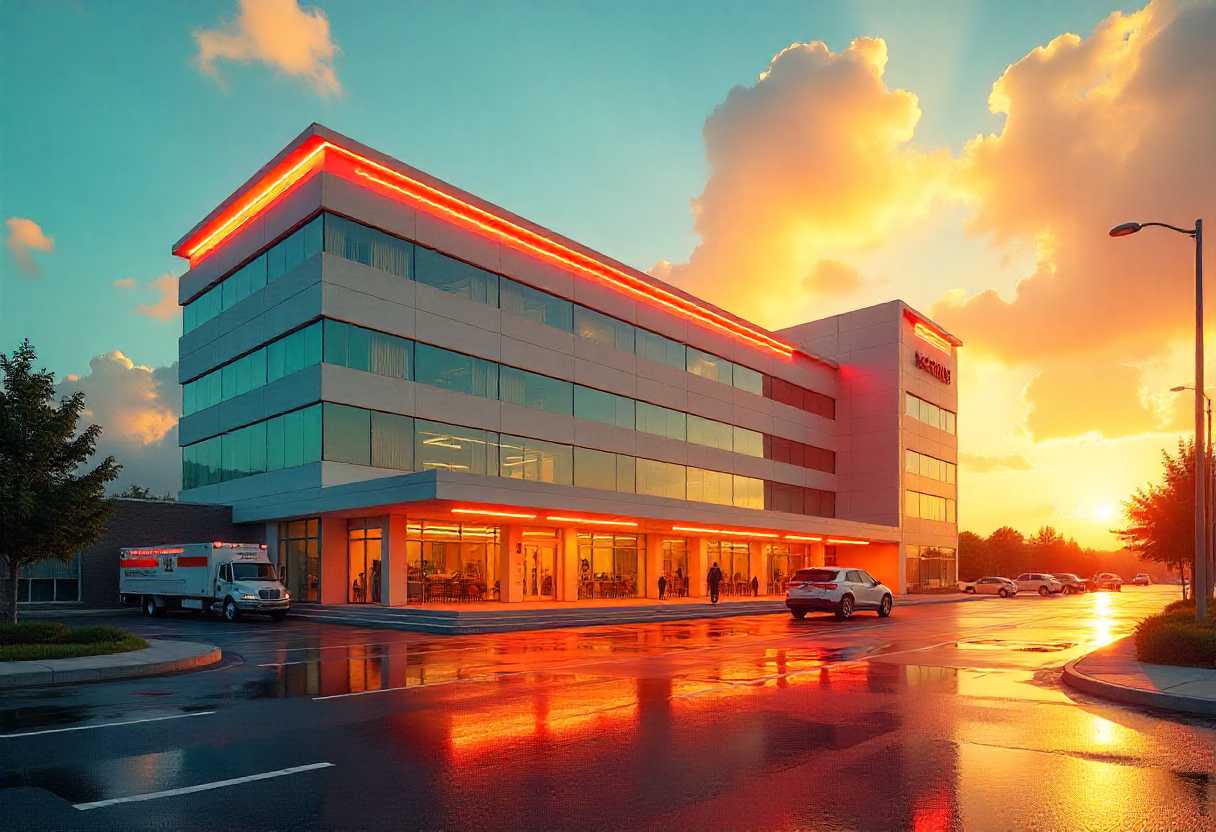Who Needs a TM52 Assessment?
If you're working on a non-domestic building with no active cooling, chances are you need a TM52 Assessment. Whether it’s for planning, sustainability targets, or simple peace of mind, TM52 helps future-proof your building against rising temperatures.

Hot days are becoming the norm in the UK and while that’s great for weekend BBQs, it’s not so fun if you're stuck in a stuffy classroom, office, or hospital ward. Overheating in non-domestic buildings isn’t just uncomfortable, it can be dangerous. That’s why the TM52 Assessment exists.
But who exactly needs one?
If you’re planning a school, designing an office, or retrofitting a library this blog is for you. We’ll explain who needs a TM52 Assessment, why it matters, and how we at Gradwell Group help you stay cool (and compliant).
What is a TM52 Assessment, anyway?
A TM52 Assessment is a method developed by CIBSE (Chartered Institution of Building Services Engineers) to evaluate the risk of overheating in non-domestic buildings. Think offices, schools, healthcare facilities, and libraries basically, any space that’s not a home.
It’s especially useful for buildings that are “free-running” that means they don’t rely on air conditioning, but instead use natural ventilation, thermal mass, and clever design to stay comfortable in summer.
So if your building doesn’t have mechanical cooling, TM52 might be a requirement not just a nice-to-have.
Who actually needs a TM52 Assessment?
Here’s a breakdown of the main groups that should seriously consider (or are often required to conduct) a TM52 assessment:
Educational buildings
- Primary and secondary schools
- Colleges and universities
- Nurseries and childcare centres
The Department for Education expects thermal comfort to be assessed under BB101 guidelines, which align with TM52 principles.
Healthcare and care settings
- Hospitals
- GP surgeries
- Residential care homes
Overheating in these spaces can be life-threatening, especially for the elderly or vulnerable. HTM 03-01 highlights the importance of thermal comfort in healthcare.
Offices and commercial buildings
- Open-plan offices
- Co-working hubs
- Council or government buildings
Comfort = productivity. If your staff is roasting, your business isn’t operating at its best.
Libraries, community centres and public buildings
- Places with long occupancy hours and minimal ventilation
- Often subject to planning approvals and BREEAM assessments
When is a TM52 Assessment required?
You may need a TM52 Assessment when:
- Your building relies on natural ventilation
- You're applying for planning permission under the London Plan
- You're aiming for BREEAM credits or Part O compliance
- You want to reduce reliance on expensive air conditioning systems
- Your local authority, especially in cities, requests it as part of a sustainability or overheating mitigation strategy
TM52 is often requested in London, where planning rules are stricter about urban heat islands and passive design.
Want to learn more about the difference between TM52 and TM59? We’ve broken it down in this blog post.
What does a TM52 Assessment involve?
The assessment is based on three thermal comfort criteria:
- Hours of Exceedance
The space must not go over 1°C above the comfort threshold more than 3% of the time. - Daily Weighted Exceedance
This looks at how far and for how long the temperature strays from the ideal. - Upper Limit
The building must never exceed 4°C above the threshold.
If your design fails two or more of these, it’s a failure overall.
That’s where we come in to offer practical, cost-effective fixes.
How does the Gradwell Group help you pass TM52?
At Gradwell Group, we offer comprehensive TM52 Overheating Assessments designed to support your planning application, compliance goals, and project deadlines.
Our process is simple:
- Project consultation
We discuss your site, occupancy, and goals. - Thermal modelling
Using weather data and your floor plans, we run advanced simulations. - Detailed report
We highlight where your design passes or fails clearly and jargon-free. - Practical advice
If improvements are needed, we’ll recommend affordable design tweaks. - Compliance support
We ensure your reports meet local and national planning expectations.
Learn more about our TM52 Overheating Assessment service
What if your building fails TM52?
No worries. A failed assessment isn’t the end it’s a starting point for smarter design.
Common fixes include:
- Adding external shading or brise soleil
- Upgrading glazing to reduce solar gain
- Increasing natural ventilation through windows or vents
- Using thermal mass to absorb and release heat more evenly
- Considering night cooling strategies (especially for offices)
FAQ’s
1. Is TM52 legally required?
It’s not part of Building Regulations yet, but many councils and planners now expect it as standard, especially for educational or civic buildings.
2. Can TM52 be used in residential buildings?
Not usually. Homes fall under TM59, which is a similar process with slightly different benchmarks.
3. Do I need TM52 if I have air conditioning?
Not typically. TM52 is most relevant for free-running buildings. But if you’re designing a low-energy or BREEAM-targeted project, it’s still worth considering.
How long does it take to get results?
At Gradwell Group, we can usually deliver your TM52 report in 5–10 working days, depending on the project size.
Final thoughts
If you're working on a non-domestic building with no active cooling, chances are you need a TM52 Assessment. Whether it’s for planning, sustainability targets, or simple peace of mind, TM52 helps future-proof your building against rising temperatures. We’ve helped clients across education, healthcare, and commercial sectors stay cool, compliant, and ahead of planning hurdles. Want help with your next TM52 project? Contact our team today or explore our TM52 services for expert advice and rapid turnaround.
.svg)









